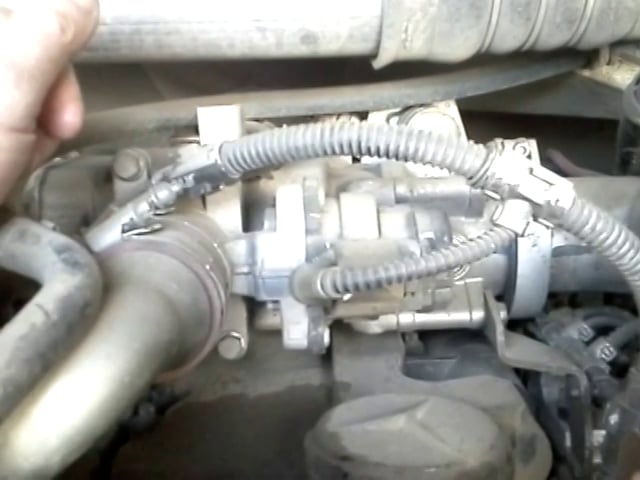Results From Replacing EGR Valve
After replacing the EGR Valve it fixed the engine code problem and the engine is back to speed. The code was indicating the EGR was in the wrong position. The old part was gummed up and that caused the valve to stick. The driver said he noticed the codes on the dash and suddenly lost power coming back to the yard.
Exhaust Gas Recirculation Reduces Nitrogen Oxide Levels
(EGR) Exhaust Gas Recirculation is a technique to reduce (NOx) nitrogen oxide emissions. The exhaust gases are redirected into the engine cylinders replacing a certain amount of oxygen in the pre-combustion mixture.
When nitrogen and oxygen are subjected to a high temperature NOx is produced. However the EGR creates lower temperatures in the cylinders this causes inefficiencies with the combustion process. The EGR system also has a heat exchanger or EGR Cooler which helps reduce exhaust temperatures routed to the intake system.
Since the EGR reduces combustion temperatures this creates more unburned fuel forming more particulates in the exhaust output. So with more EGR activation there is less power through the ‘power stroke’.
The diesel particulate filter helps capture these particulates and burns them off using heat from fuel directed into the downstream exhaust which reacts with the ‘diesel oxidation catalyst’ inside the DPF.
Fleet Maintenance to Reduce EGR Problems
The carbon particulates we have to deal with is not going away. The objective in our shop is to reduce soot build up and divert engine codes and unpredictable mechanical failures. We have tried to clean up an EGR valve but it just reduces the number of times the engine code pops up and does not totally cure the problem.
The only fix is to replace parts in the emission system. When I started out in this trade there was a LOT of rebuilding going on but emissions and reducing the carbon footprint wasn’t in our vocabulary back then.
Now it’s the EPA running the show and I’m all in for helping save the environment from total destruction. There are many greedy people in the world where money rules and pumping crap into the atmosphere or junk into our waters doesn’t matter to them.
It will take time to get used to the new technology but as with all mechanical devices once you get some experience it’s all elementary diagnosing and repairing the problem. There ARE ways to set up a maintenance plan to prevent components from failing.
Using The DPF To Cut Down On Emission Component Failures
Normally the engine control module starts the regeneration process of the DPF (diesel particulate filter) to inject fuel into the down side of the exhaust system which increases the heat going through the DPF and reacting with the DOC (diesel oxidation catalyst) to burn off the particulate build up.
There IS a way to force this process using the diagnostic software to start regeneration any time you want. We are now scheduling forced regeneration after every major service to prevent soot build up.
Replacing the DPF runs around $700 and the manufacturer (Mercedes) suggests changing it every 125,000 kilometers (70,000 miles) I’m hoping this will reduce problems down the road.
Thank you for reading this post and please feel free to leave a comment and share this post with others. If you like being around mechanically minded individuals join the hub for free and share your knowledge with other members or ask questions in the forum. There are MANY years of combined experience within the membership here 🙂







